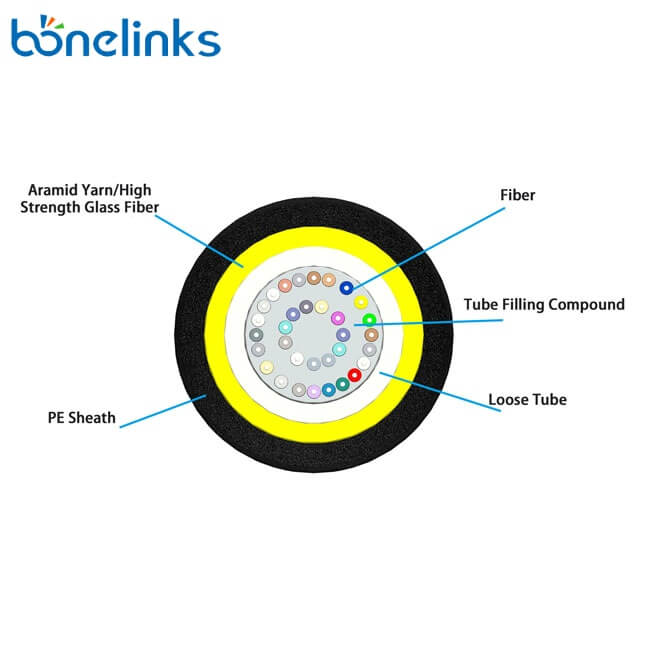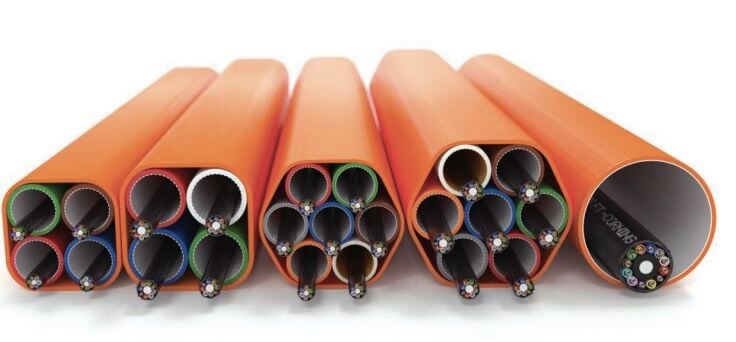How can operators meet today’s infrastructure needs and open the way for new growth while reducing future construction costs? The answer is the deployment of microduct optical fiber cable. Microducts are small conduits used to enclose fiber optic and miniature cables into tight, secure enclosures. Microducts and microcables are designed to work together to provide a very effective and efficient way to deploy passive optical infrastructure, enhance and improve data paths to meet increased bandwidth demands, and help operators speed up the installation process. This article will introduce simple but important information about microduct optical fiber cable.
What is Microduct Optical Fiber Cable?
Microducts are small plastic conduits that subdivide the interior conduit space into smaller compartments into which microfiber cables can be installed by blowing, spraying, or pushing. Microduct fiber optic cable is constructed of stranded loose tubes with double tube design and low friction polyethylene sheath. The fiber optic cable is optimized to be blown into micro ducts. The buffer tubes and the fibers contained within are color coded for quick identification.

Features and Benefits
Microduct optical fiber cable offers high fiber counts, higher fiber densities, improved cable handling, smaller cable diameters, scalability and flexibility, durability, clean, continuous and low friction paths for installation with relatively low pull-limited cables and cost savings for future installations. Additionally, it is available in a variety of colors and sizes for easy identification and to optimize system design and use.
Application
Microduct optical fiber cable can be used for duct system laying, direct installation and direct burial, trunk lines, power distribution and feeder cables, FTTx networks (FTTH, FTTB), data centers, 5G infrastructure, local area networks (LAN), metropolitan area networks (MAN), blowing and towing installation of user network systems, long-distance, backhaul, access networks, broadband networks, etc.
Summary
Microduct optical fiber cable not only has a small footprint and high density, but it also enables advanced cable access, making installation easier and faster while limiting the need for sharp blade tools.




